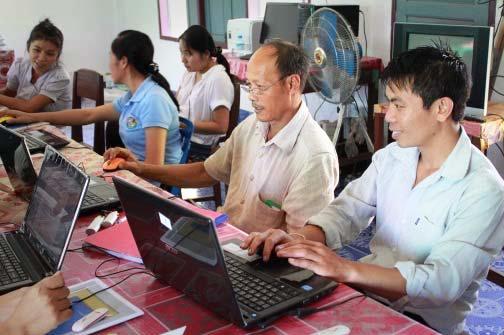The United States Agency for International Development (USAID) Connecting the Mekong through Education and Training is a five-year project that enables teachers to better prepare youth for employment in the Lower Mekong countries of Cambodia, Laos, Myanmar, Thailand and Vietnam though the use of innovative training approaches.
USAID works to bridge the gap between the private sector, universities and vocational centers to build up the supply of skilled workers to meet the demands of local businesses. The project will partner with local education providers to utilize mobile technology, online learning and traditional in-person workshops to promote learning and regional networking in targeted Association of Southeast Asian Nation (ASEAN) countries in ways that help residents from rural and marginalized areas access educational services.
PROMOTING SKILLED LABOR FOR ECONOMIC INTEGRATION
The ASEAN Economic Community promotes mobility for skilled laborers as a means to increase job opportunities and connectivity across the region. However, in most Lower Mekong countries, skilled workers are in high demand by the private sector but in short supply. In a study of employers in Cambodia, 73 percent reported that university graduates working for their firm did not have suitable skills.
In the Lower Mekong sub-region, employers seek graduates with training in specific specialties such as science, technology, engineering, mathematics, accounting and tourism (STEM+AT) fields, as well as prior work experience. The project helps universities and vocational centers increase the number of skilled workers in STEM+AT fields in the Lower Mekong countries, ultimately contributing to a strong professional workforce capable of tackling development challenges. A particular focus is placed on enabling greater access to educational opportunities among disadvantaged youth.
CONNECTING STUDENTS WITH THE MEKONG MARKETPLACE
As a first step, the project identifies specific jobs and skills in high-demand in STEM+AT fields through consultations with leading industries. The project then develops customized curricula and applied work-based learning programs to address these skill gaps through developing partnerships with the private sector, universities and vocational centers in the Lower Mekong sub-region.
Instructors from universities and vocational centers in the region receive training in the customized curriculum and in modern strategies for complementing online learning with in-person classes. USAID uses input from leading multi-national and national technology firms and other employers to ensure that participants will develop and apply skills needed within the region.
The project ultimately strives to empower Lower Mekong countries to capture emerging opportunities under the ASEAN Economic Community through development of their workforce in a manner that is inclusive, effective and reflective of skills in high demand by the private sector.








Comment
Make a general inquiry or suggest an improvement.